3 Steps to Creating Direct Response Videos That Convert

This is a guest post by Conor Grant, Marketing Manager at FuelX, a direct response video advertising platform.
Nobody likes a complainer who points out problems but isn’t interested in developing solutions.
This article points out some ways NOT to make great video content, but more importantly, it gives you some concrete strategies to make great videos.
Some of these examples of how not to create video content may seem obvious, but it can be far more difficult to know how to create high-quality video content that converts viewers.
Use the strategies and examples below to create great video content that will grow your business.
Remember that 3rd-grade teacher who failed you for forgetting to write your name on your spelling test? Well, it turns out she was onto something.
Failure to include a clear and persistent brand mark (logo, name, slogan etc.) is the most common cause of video campaign under performance.
It doesn’t matter how beautiful, inspiring or hilarious your video is if your audience doesn’t associate it with your brand.
A good way to help ensure that your video includes everything necessary to facilitate conversion is to remember that the buyer’s journey doesn’t always end with your video. Often, it starts there!
Ensure that all of your video content gives every viewer a way to take the next step on their personal buyer journey, whether that next step is to visit your website and learn more about your product or to click a promotion, redeem a code, and make a purchase.
Take advantage of types of inventory that offer extra opportunities for promotion, but don’t rely on companion banners and supporting ads to provide the information your consumers need to convert.
Video advertisements can and should provide all the information that a viewer needs to make a purchase–directly in the video player.
When producing or commissioning your video, be sure to include all of the following critical creative components:
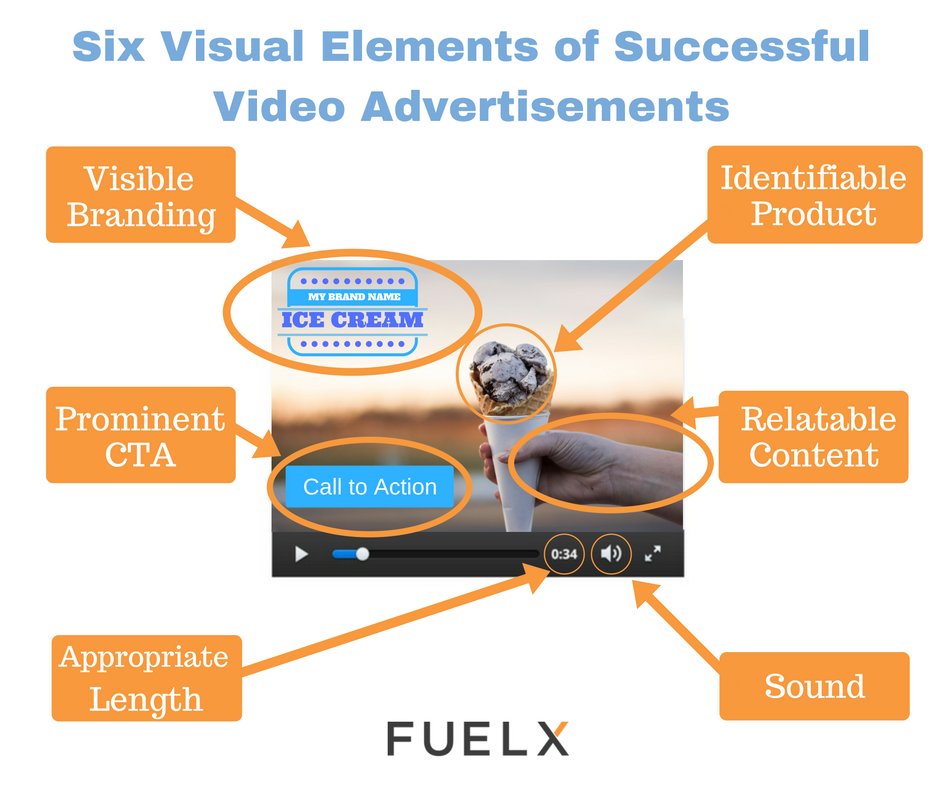
Visible Branding: If viewers can’t easily identify the brand with which the video is associated, it is unlikely they progress towards conversion or develop brand affinity.
Prominent Call to Action: Video advertisements must provide viewers with a clear path to continue their buyer’s journey in the form of a call to action (CTA) that encourages clicking through.
Appropriate Length: The length of the video should be brief enough to maximize effectiveness given limited viewer attention and long enough to deliver relevant information.
Optional Sound: Since different inventory types suppress sound, videos must be produced so that they are enhanced by sound but do not require it to engage viewers and deliver key messages.
Relatable Content: The video content should provide sufficient context to be understood and enjoyed by the target audience.
Identifiable Product: Both the important qualities of the product and also the appeal of the brand should be explicitly evident to the viewer to facilitate conversion.
Putting yourself in your viewers’ shoes is an important part of launching successful digital advertising campaigns. In the context of content production, the best way to do this is to develop content specifically for certain inventory types and to develop an integrated cross-format digital strategy.
In the context of content production, the best way to do this is to develop content specifically for certain inventory types and to develop an integrated cross-format digital strategy.
Content, inventory, and audience must all be matched in order to engage viewers without disrupting their digital lives.
Since video content that is developed for one format generally doesn’t translate well to other formats, it is important to design video content to naturally fit certain video players and formats.
Use the following list to develop your understanding of some of the most popular inventory types and formats, what types of audiences typically engage with them what content works best within them:
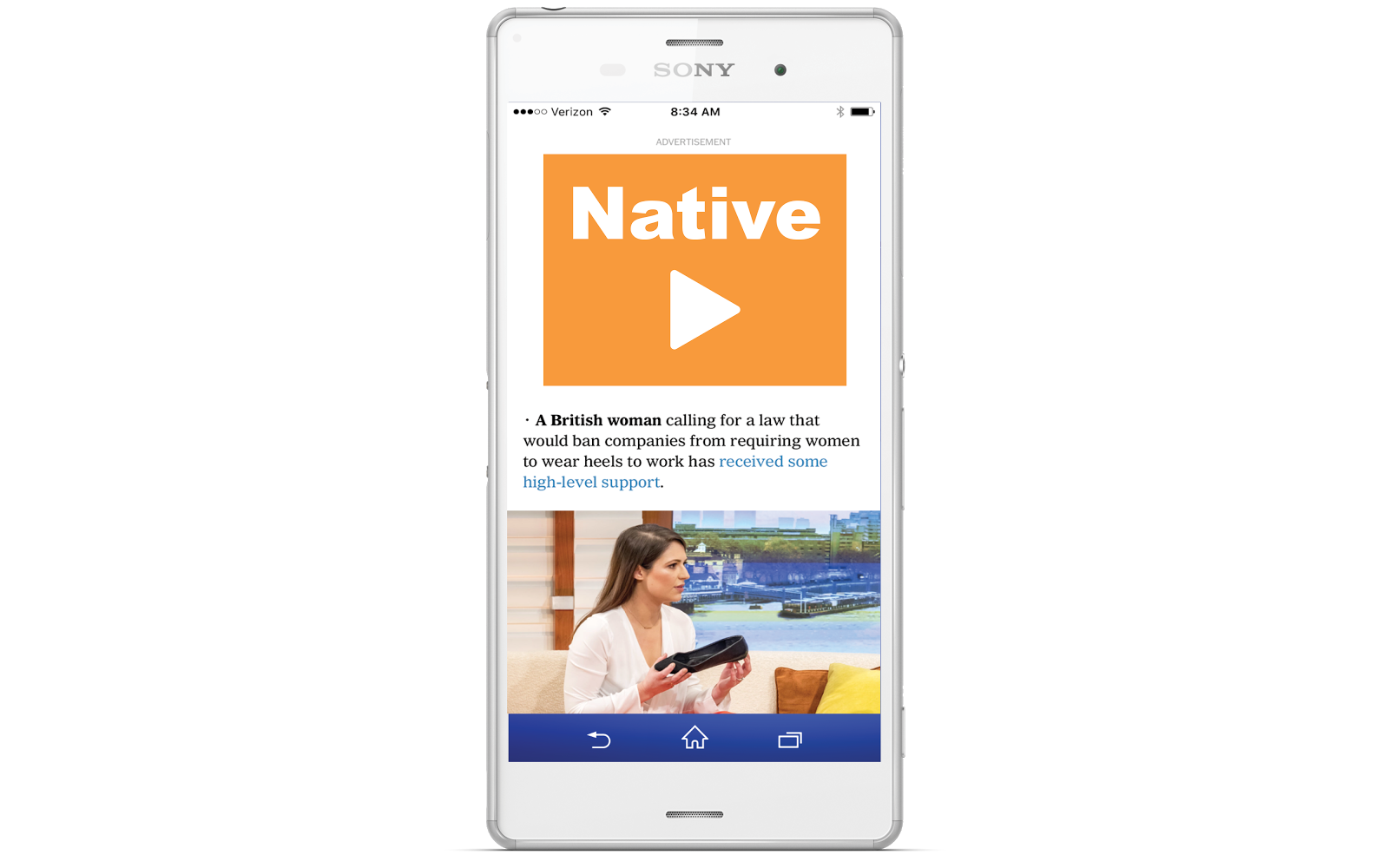
‘Native’ video advertisements appear in social and news publications with formatting specifications that match the surrounding content. The goal of native video is to drive viewership and engagement, with video content and formatting that seamlessly fit the rest of the website. Native ads drive higher viewability and engagement than standard in-banner ads, which leads to higher click-through rates and brand lift metrics.
Audience Profiles
High-volume content consumers; Consumers of all engagement levels; Young Professionals/Students
Specialized Content Options:
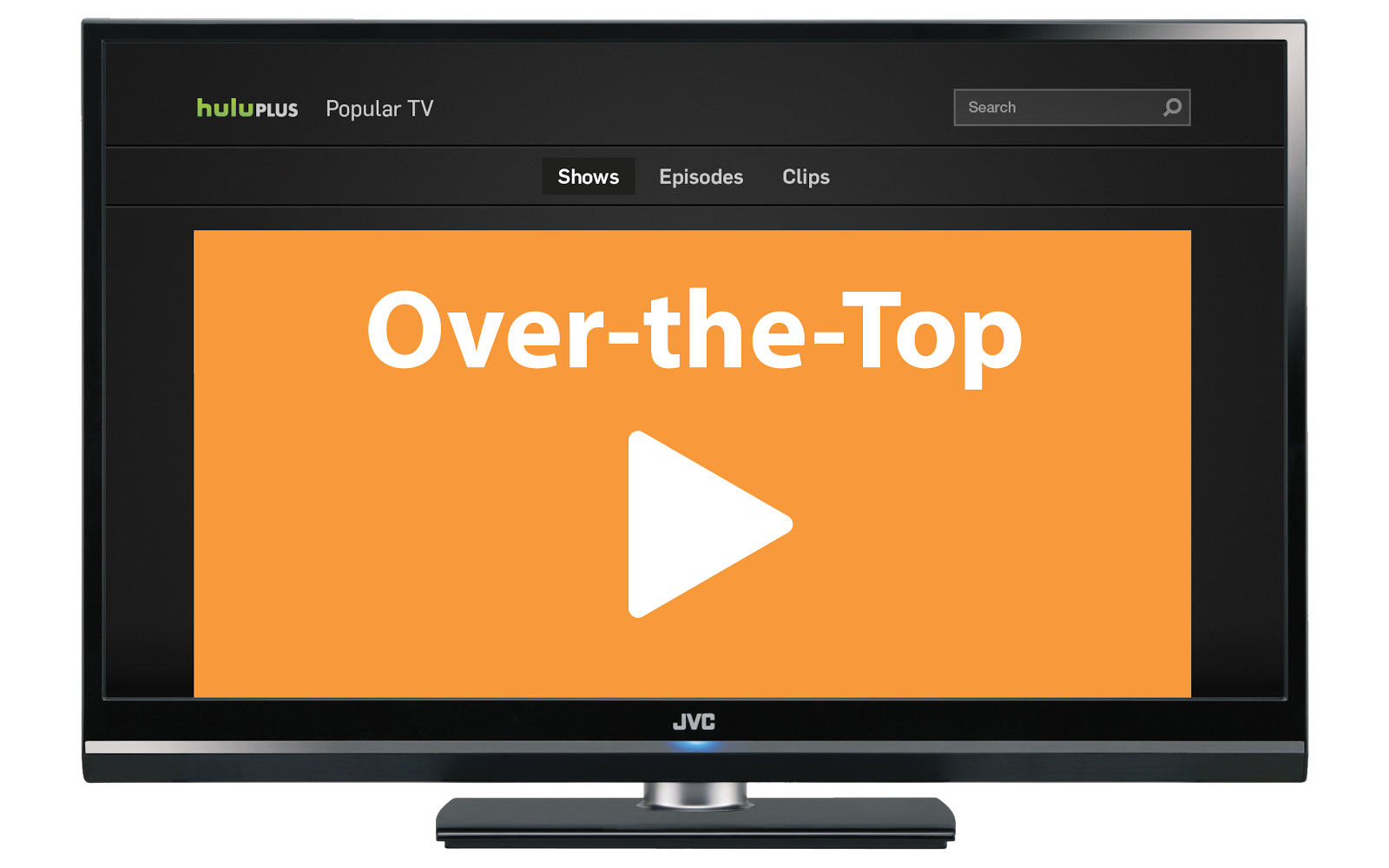
Over-the-top (OTT) video advertisements stream through cable boxes, gaming consoles, and other connected devices. OTT video inventory is an important bridge between traditional television and modern digital media that allows advertisers to apply programmatic targeting precision to devices throughout the home.
Audience Profiles:
Low-volume content consumers; Low digital engagement consumers; Families; Children; Retirees
Specialized Content Options:
Long-form content; Branded content

In-banner video advertisements appear in static banners on websites across the internet. Unlike in-stream video inventory, in-banner video inventory is available anywhere that advertisements are published — not just on sites that have video content. While in-banner videos do not guarantee views, they do allow nearly unlimited targeting parameters due to their cross-internet availability.
Audience Profiles:
High and low-volume content consumers; Low digital engagement consumers; Professionals; Students;
Specialized Content Options:
Interactive content; Short-form promotional content; Scrollover content

In-app video advertisements appear programmatically in applications (other than web browsers) on mobile devices, tablets or desktops. Since in-app videos match the specifications of their host applications, they offer advanced engagement tracking metrics and high click through rates. In-app video inventory is often a highly successful way to target consumers who actively play games, monitor news apps or browse social media apps.
Since in-app videos match the specifications of their host applications, they offer advanced engagement tracking metrics and high click through rates. In-app video inventory is often a highly successful way to target consumers who actively play games, monitor news apps or browse social media apps.
Audience Profiles:
High-volume content consumers; High digital engagement consumers; Children; Students
Specialized Content Options:
Interactive content; Short form promotional content; Sponsored content, Advertainment, Topically Relevant Content, Vertical Video
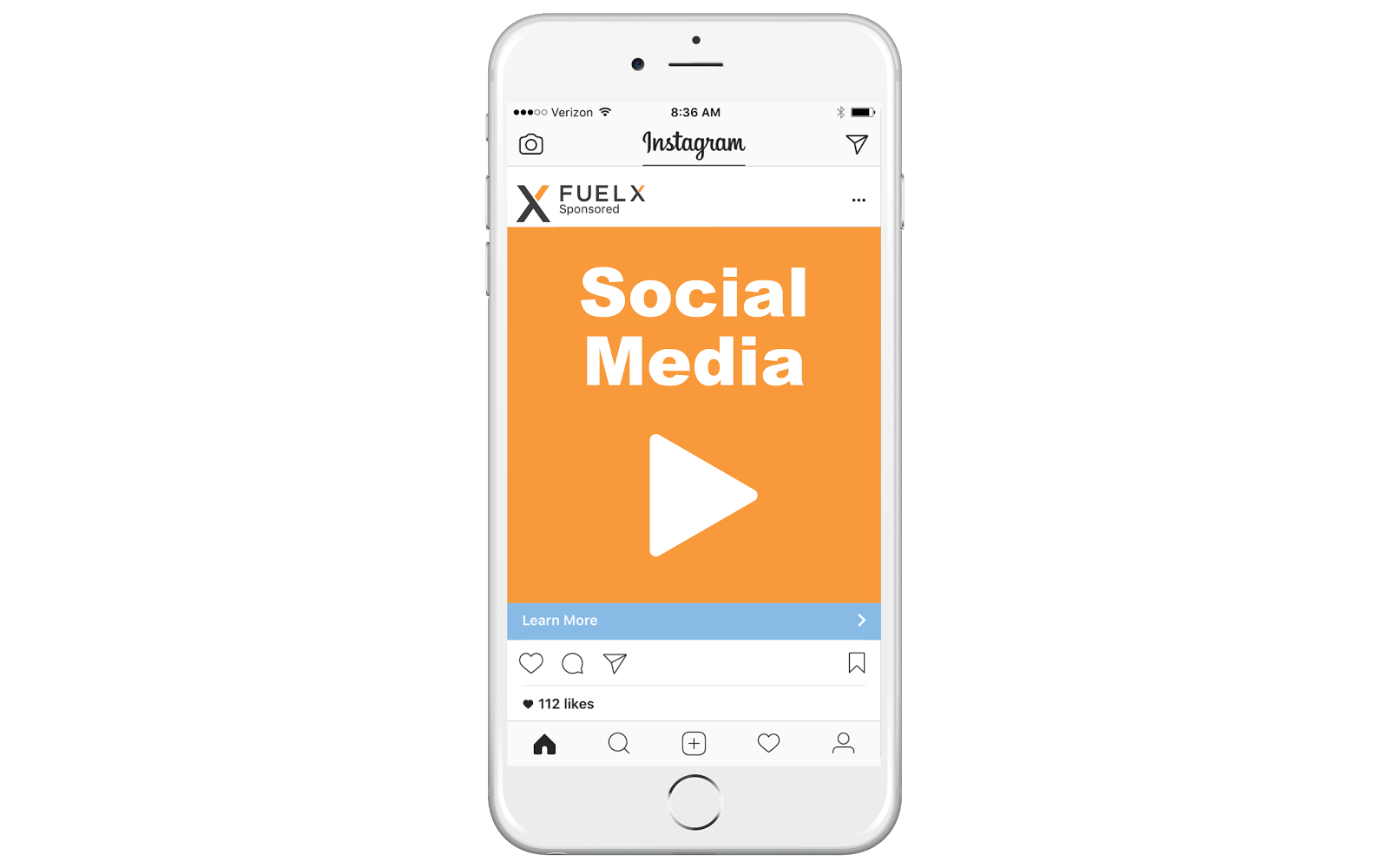
Social media video advertisements appear in social media feeds across the largest social networks. Social media video inventory engages highly active digital consumers (particularly amongst younger audiences) and produces high click-through rates. Social media video inventory provides engagement opportunities — such as sharing, liking, or re-posting — that are not available across the rest of the web.
Audience Profiles:
High-volume content consumers; Very high digital engagement consumers; Children; Students; Professionals
Specialized Content Options:
Vertical Video; Interactive content; Short form promotional content; Sponsored content
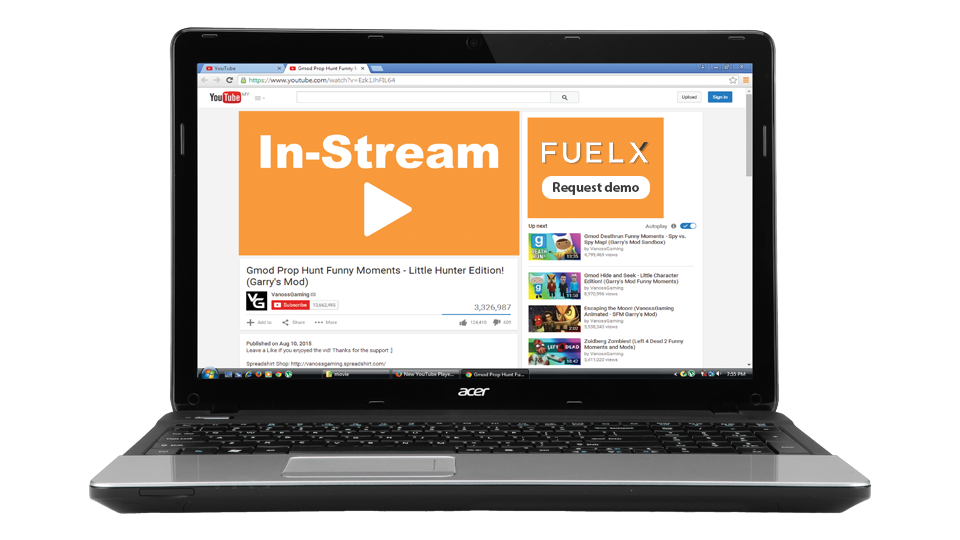
In-stream video advertisements appear in designated video players found on publications across the internet. These video ads can run before the primary content (pre-roll), after the primary content (post-roll), in the middle of the primary content (mid-roll) or coterminously with the primary content (overlay). In-stream videos are highly viewable. Since in-stream videos are placed only on pages that feature videos (which greatly increases viewability), they are limited by video inventory availability and targeting precision.
Audience Profiles:
High-volume content consumers, Younger Demographics
Specialized Content Options:
Long form content; Advertainment, Topically Relevant Content, Vertical Video
How do you know if your video is crappy? The answer is that you may not know whether your video is crappy, but your viewers will definitely know whether your video is crappy, and they will respond to it accordingly.
If you’re not speaking directly to your audience in the content of your advertisement and afterward, you’re not maximizing your advertising spend. Your video should appeal directly to your target audience.
The first step towards ensuring that your videos are not crappy is to research and understand your audience’s tastes and interests.
The second step towards guaranteeing that your videos are not crappy is to rigorously track the performance of your videos by means of engagement metrics to understand whether your audience is receptive to your content or not.
To create video isn’t crappy, start by doing a thorough audit on your target audience and their tastes and interests– before you produce your video content.
Intentionally match your content to the inventory that your audience is most likely to engage with, and develop content that suits the sense of humor and taste of your target audience.
To ensure that your video isn’t crappy, use engagement metrics to gauge whether or not your audience is receptive to your video content.
Collecting this data will tell you whether or not to update your creative to resonate more successfully with your audience. When evaluating the success of your content, make sure that you are tracking the following performance indicators:
Performance: Did your video serve?
Metrics: Videos Started, Videos Stopped, Videos Loaded, Videos Selected
Viewability: Did anyone see your video?
Metrics: Impression Count, 1st Quartile Completion Count, Midpoint Completion Count, 3rd Quartile Completion Count, Full Video Completion Count
Engagement: Did anyone interact with your video? How?
Metrics: Interaction Rate, Expansion Rate, Size Change Rate, Skip Rate, Minimization Rate
Conversion: Did your video drive conversions? How efficiently?
Metrics: Click Through Rate, Invitation Acceptance Rate, Purchase Volume
Video advertising is an important component of any advertising growth strategy.
While video advertisements are rarely perfect the first time around, but they are always valuable when they are produced, distributed and evaluated properly.
The only way to fail as a video marketer is to go through the processes of producing, distributing and evaluating video content without thinking once about your audience.
Make an earnest effort to match your content to your audience and measure your audience’s response — and you will be guaranteed to learn something valuable about your audience.
Once you have optimized your video advertising campaigns, you will be able to engage with members of your audience far more broadly than you could with static digital advertising alone.
The featured image on this post is by Smart, providers of photography and camera tutorials.
